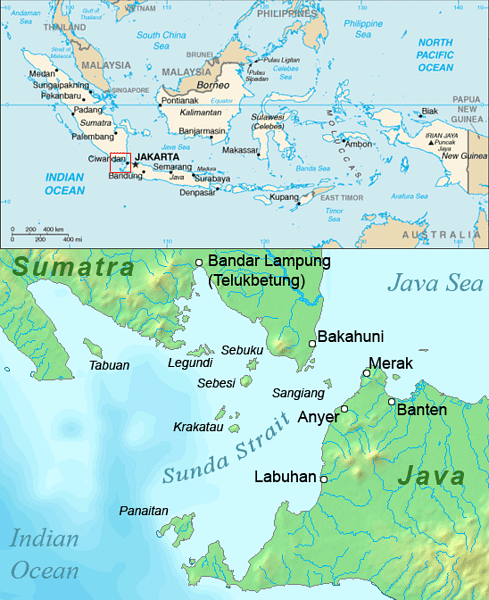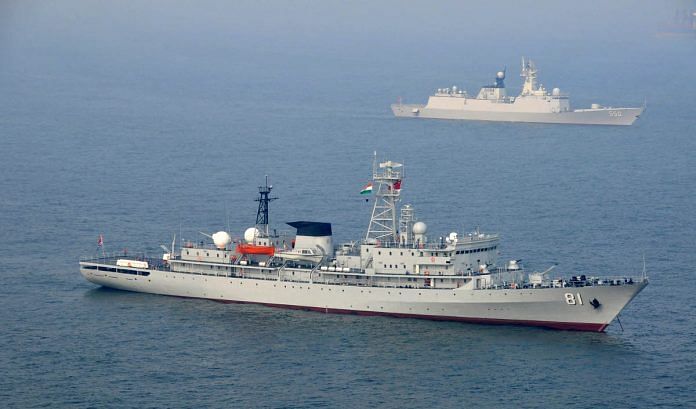India and China may have faced-off for 73 days in Doklam last year, but naval officers of the two countries had a reunion on the high seas. ThePrint listens in.
“Hey, hello”
“Suanshu, hi”
(name changed).
The first caller is the commanding officer of the INS Rana, an Indian Navy warship.
The man who responded to the call was leading the Chinese warship, the Yancheng.
It happened this Monday.
The Rana is a destroyer. It packs a lot of firepower.
The Yancheng is a frigate, a smaller ship that is versatile.
Rapists, lynchers, misogynysts, haters, listen in.
Listen in to the international maritime radio frequency, Channel 16.
This is how those at sea talk.
India and China are supposed to be rivals, right?
Fifty nautical miles south east from the southern tip of Sri Lanka they want beer and cheer.
The captains of the Rana and the Yancheng are talking in troubled waters. India and China are talking. This is the monsoon.
They debated – The Print cannot disclose names of serving officers – whose beer was best.
The Admiral who has given The Print this narrative was at sea for 20 years.
“I am still at sea,” he says of his desk job in defence headquarters, New Delhi.
The Rana is based, or “homeported”, in Visakhapatnam. She is from India’s Eastern Naval Command.
The Yancheng is headed for Qingdao.
And this is how the conversation flew:
“So, you are taking Sunda?”
(A reference to the Sunda Straits that is, apart from the Malacca Straits, a narrow waterway between the Indian Ocean and the South China Sea).

“Yes, but am also coming to Madras next month,” the Chinese commander replied.
“Have a good time in Jakarta”, said the Indian.
He was giving out that he knew the Chinese’s whereabouts and wheretofores.
As it happens, the CO of the Rana and the CO of the Yancheng were mates in a military course years back. The Yancheng captain couldn’t say “Chennai”. He said “Madras”.
The Yancheng of the PLA-N (Peoples Liberation Army-Navy) was part of the 28th ATF (Anti-Piracy Task Force), east of Aden. The 29th has now taken over.
It is returning home after a three-month deployment. A submarine is not part of its battlegroup. A PLA-N submarine is usually an accompaniment.
The Rana, one of India’s favourite ships is in IODEP (Indian Ocean Deployment), one of seven “mission deployed” flotillas.







What a shitty article…has nothing substantial.
Now this article is a good example of a good message written with questionable motivation. The sixth, or the seventh paragraph maybe has been addressed to a certain type of people. What exactly was the thinking in the writer’s mind before typing that? What kind of message was he trying to send, and more importantly, to whom? That paragraph, and a few words here and there changed the entire time of this article. Instead of looking like a piece of info indicating an air of harmony between the rivals, it sounded like an agenda driven post.
Sometimes before writing a piece, you should think, do people always have to get riled up for littlest of things? Was this news important enough to call out people? Does everything has to be interpreted in a partisan way? And do not fool yourself or anyone else by saying that there wasn’t any such thinking before publishing this article.
See, there are people in this country who believe in independent thinking. Who do not fall left or right for everything. And those people want fair news, if you know what that means. To my dismay, I see less and less of that everyday. I hope you understand what I mean and think about it.
Thank You
Dear sir why making news international interaction are a healthy sign, but be cautious also
“Rapists, lynchers, misogynysts, haters, listen in.
Listen in to the international maritime radio frequency, Channel 16.
This is how those at sea talk.”
what does this mean? What is the relevance of those lines in this article? Is this the level of journalism Shekhar Gupta and other famous journalists associated with “The Print” promote!